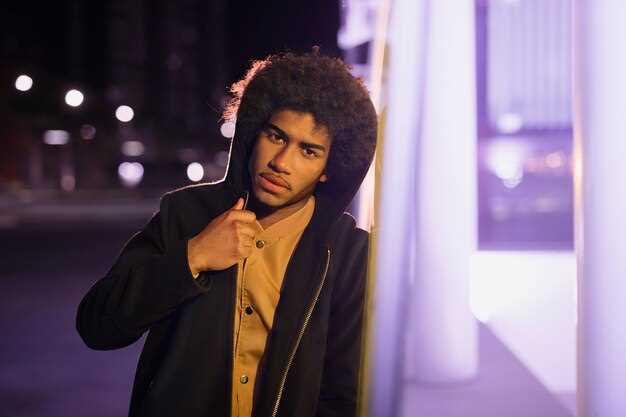Recommendation: center stage demands restraint; readers must look toward nuance rather than sparks.
kanye becomes a reference point; shawn navigates ground where history, albums, samples, and live moments collide. thousands watched suburban march; memories passed through, times of tension met calm. looking for subtext, listeners counted delays, glances, and signals.
Stories frame this moment as living document, with kanye bouncing between rudest shouts and calm restraint. a legend sits surrounded by cameras, the-dream era vibes radiating through light; george and shawn references ripple across playlists.
In listening, samples become breadcrumbs, tracks serve memory lanes. seven moments surface across times, answered questions by fans, showing clear arcs. george vantage point, child memories, and walking through fame frame a narrative where light tells what wants to be remembered and notice resonates with audience.
this measured reply avoids canned reflex; lived experiences guiding tone, being authentic matters. it speaks to thousands watching, not a canned clapback. center remains pivot, as suburban crowds march onward, enjoy classic tracks, and a legacy that surrounds everything around.
Practical Coverage Angles
Recommendation: Anchor coverage in verifiable data, not rumors about individuals. Track four signals: audience sentiment in comments, shares, and video retention; official statements from reps; references to projects (albums); and regional interest from chi-town and kansas audiences, with emphasis on stars and earlier reporting patterns.
Analyze how home life moments influence reception; while having a stake in the conversation, measure changes in sentiment and engagement, using april benchmarks to gauge seasonal impact. This helps determine how much coverage welcomes new voices and how much it focuses on the four major themes.
Editorial actions: prepare sample headlines and framing guidelines; run earlier versions through editors to ensure tone remains informative. Added pointers: rely on reading of reliable sources, avoid traditional sensational cues, and present context that clarifies what is above the fold in the chatter around the four fronts: project references, audience reaction, regional signals, and industry chatter. Keep tone fine.
Guard against language that feels pointed or sensational; never frame content with a right-skew that takes, and avoids takes that easily hurt readers. Keep a ready plan for clarifications and corrections. When imagery comes up, ensure visuals don’t rely on casket cues; stick to factual context and avoid inflammatory memes.
Operational notes: daily tally of calls from readers and editors; document needs and preferences. Were these adjustments learned from prior coverage? Maintain a hand-built dashboard that tracks everything, with annotations from dwayne, kevin, and ashton when possible. Include a short song excerpt as a neutral sample to illustrate context, but avoid reproducing lyrics. Also recognizes that jays references can appear above baseline; welcome feedback from the audience as part of the process.
What is the exact timeline of the tweets, responses, and Beyoncé’s performance?
January 12 posts began on a major platform; a friend of a known figure posted a curt remark, sparking rapid ripple across feeds.
January 13 replies escalated; a close associate commented, followed by images and videos visited across feeds.
January 14 a clarifying call from camp appeared; turns in narrative grew as rudest remarks circulated.
January 16 rumors tied Harlem roots to american routine; swipe through stories claimed connections to a university visit where somebody visited kansas.
January 19 chatter carried references to rappers, redding, aldean; machine feeds piled up data; story lines showed opposite persona; care for reputation appeared clearly.
January 20 event closed with a joint set, surprising attendees; ended with a stone-like impression, as yankees chants rose, signaling rich glory; reputation grew as audience witnessed a crossover.
Images from that night circulated; youre asked to note what comes from which sources, visited by david, winkler, and somebody else in harlem, as part of a broader following.
Which signals in Jay Z’s reply indicate a subtle stance, and how should readers interpret them?
Recommendation: interpret the response as a deliberately restrained beat that keeps the door open for unity, collaboration, and influence, rather than a blunt sanction or open clash.
-
Signal: unity-driven phrasing appears, with references to a shared path and national audience. Interpretation: the author wants to keep the nation aligned and the social conversation constructive, avoiding a personal clash that could derail a larger, glamorous moment. This keeps important comments and shares circulating without creating a hostile tone.
-
Signal: coded restraint rather than direct accusation, plus a tone that foregrounds respect and friendship. Interpretation: a strategic move to avoid alienating fans, partners, and sponsors while maintaining leverage for future action. Readers should see this as controlled diplomacy rather than weakness.
-
Signal: emphasis on collaboration and featured opportunities, not retreat. Keywords like featured, performance, awards, and taking center stage hint at a long game that prizes influence and continued presence in the scene. Interpretation: the author signals that help, routine appearances, and future plans matter more than a one-off clash.
-
Signal: calls and script wording that hint at a measured public script rather than spontaneous remarks. Interpretation: readers can expect more measured exchanges, with later rounds of dialogue that steer the conversation toward constructive outcomes rather than street-style confrontations.
-
Signal: references to timing, later moves, and action-oriented framing (times, then, later, action). Interpretation: the reply signals patience and a staged approach to any escalation, making it easier for fans to digest without feeling immediate confrontation.
-
Signal: personal touches that frame the stance as friend-to-friend rather than adversarial, using terms that echo support and loyalty. Interpretation: indicates a desire to protect relationships within the industry while signaling that the door for future collaboration remains open.
-
Signal: social-media rhythm shifts, including comments and a carefully chosen single tweet rather than a cascade of posts. Interpretation: the author tests public reaction, balancing visibility with restraint to avoid disturbing the broader community.
-
Signal: imagery and word choice that can be read as both aspirational and grounded, mixing glamorous tone with street-smart realism. Interpretation: a layered narrative intended to elevate status without alienating core audiences.
Reader interpretation guide using industry cues and name-checks: look for mentions of jeff, lyor, parker, cameron, dolan, april, katrina, alyssa, and others as signals of backstage alignment or commentary from industry voices rather than personal attacks. When the reply nods to awards, featured moments, and a steady routine, it suggests a strategy focused on long-term influence, not quick wins. Disturbing or harsher interpretations lose momentum, while an evolved, united stance tends to resonate with a broad audience and helps sustain a shared narrative across comments, shares, and next performances.
Practical takeaways for readers: treat the post as a script that aims to maintain relations (friend status) and push for calculated action later, with a tone that keeps the nation engaged in a glamorous, high-stakes storyline. If you notice talk about selling out difficult moments, or darker street echoes, read those elements as indicators of pressure points the author wants to steer toward a constructive resolution rather than a rupture in the circuit of collaborations and awards.
How did Beyoncé’s onstage collaboration affect fan reception and media framing?
Recommendation: Frame this outing as a level-up in onstage pairing that spotlights a talented performer, dampens rumors circulating online, reduces damage from chatter, and sets a durable template for future public appearances.
Fan reaction leaned positive across digital night chatter, with likes jumping into millions and conversations publicly praising level of craft. Erika and Alyssa noted that this pairing allowed talented performers to exchange energy without sparks of controversy, shifting focus toward a shared goal. David and Maren from media desks described coverage as more nuanced, using data to show how trust in this collaboration breaks past rumors. Tina, James, and Daniel framed headlines that featured artistry alongside public accountability; some pieces worried about overexposure, while others argued such moments were incredibly effective in building brands across online networks. A shot of Hova backstage circulated, further highlighting that a small squad can turn a moment into a cultural touchstone. Some pundits referenced the-dream era to contextualize progress. This approach meets audience needs, providing credible context.
Media framing shifted away from shock-value narratives toward a polished, music-led story where stars were seen as partners rather than rivals. South-leaning headlines framed a night of high-energy songs as a creative milestone, with hova referenced as a key collaborator and a nod to broader movement in pop culture. A few pieces publicly acknowledged that behind big moments there lies steady rehearsal, shot by shot planning, and a mental game that keeps performers present. Alyssa and Tina weighed in on whether this moment would break typical bounds or set a higher standard, while James and Daniel noted this was incredibly effective in expanding audience reach across online spaces today. People like Heidi and Melania added commentary about fame and sustainability, emphasizing that success requires ongoing engagement, not flashy stunts. With millions following, discussions turned toward whether pairing should turn into a regular feature, and whether public perception would hold steady as new songs roll out; there were, in fact, concerns about overexposure, yet widespread sentiment suggested a strong positive arc. Head coverage moved toward interpretation instead of rumor. Shawn weighed in on public reception, noting momentum across mobile and digital spaces today, which signals a new precedent.
How is audience sentiment evolving across platforms, and which metrics best track it?
Recommendation: implement a cross-platform sentiment dashboard that runs in real time with a 14-day baseline, feeding data into channels like X, TikTok, Instagram, Reddit, and YouTube, plus a central score for leadership. The follow signals, engagement velocity, and share of voice must drive decisions; set alerts for 15% sentiment shifts within 24 hours and tie outcomes to business metrics like brand affinity and intent to engage. Ensure formerly separate data teams align on taxonomy and privacy, begin this with a 4-week pilot to build a record, and keep the home audience in view to avoid blind spots.
Key metrics to track trend: polarity (positive, negative, neutral); volume and velocity of mentions; share of voice by topic; reach and engagement rate; and emotion scores (joy, surprise, anger, sadness) to capture mean sentiment and intensity. Segment by topic clusters (fashion, news, hip-hop) and by audience (home communities, mother networks, casual followers). Monitor follow signals, comments, shares, and like ratios to gauge resonance; apply topic modeling to surface shifts that seem meaningful. Recently, funny or comic content tends to cause short-term spikes that break the usual pattern; some spikes resemble a kimmel-style segment, driving a quick laugh but not always a lasting shift. When a topic is jay-z-themed, context matters: this happens when headlines turn into memes or when a creator speaks, but this doesnt always reflect overall brand health. A long-term view should track a record of sentiment across platforms to identify true momentum rather than chasing every shot.
Platform-by-platform dynamics reveal distinct rhythms: X pushes fast velocity with volatile mood; TikTok favors meme-driven sentiment; Instagram centers on visuals and tone; Reddit reveals nuanced threads; YouTube captures sentiment in longer discussions. This can seem inconsistent across channels; the same topic may feel different in home communities. The faces behind the posts–creators, moderators, and everyday followers–shape tone, so thresholds must be platform-aware. Formerly, teams relied on manual coding; frazer-style dashboards began to unify signals and recently began mapping momentum across channels more quickly. Melania-era coverage showed how fast patterns touch mainstream news, which taught the industry to respond with speed; when spokespeople spoke, sentiment often shifted in a way that touched the broader audience.
Actionable playbook: assign a cross-functional owner for audience signals and a rapid-response lane. If a spike happens, the team spoke to fans, paused publishing, and began refining a message that feels personal, not corporate. The plan must avoid definitive statements if claims are unverified (allegedly) and should progress through listen–respond–learn loops. Use a triage: monitor fashion and party moments for context; if sentiment improves, scale formats like short clips and funny lines; if it declines, switch to transparent, empathetic content. Measure impact with a life-cycle view that includes references to movies, books, and records to judge resonance. Always follow the data, but filter rudest comments and moderate accordingly. Consider taste signals across audience segments to fine-tune tone. The aim is to translate audience feedback into action: follow, learn, and adjust with clear owners and timelines; never let a single spike distort strategy.
What are the potential implications for Nicki Minaj and Cardi B and for future rivalries?
Recommendation: Build a proactive strategy around musical identity, maintain measured online exchanges, pursue joint tracks, and guide fans toward a mature, competitive dynamic.
In practice, Nicki Minaj and Cardi B can capitalize on insider perspective, allegedly shift focus toward concerts, awards, and global visibility, while avoiding gratuitous online clashes. Their teams could stage collaborative tracks that showcase vocal range, storytelling, and charismatic presence. Moments like these help shift public perception toward ambition, not vendetta.
Potential outcomes in future rivalries include rise in creative samples, faster release cycles, plus more frequent cross-genre experiments. There exists room for niche battles that feel interesting yet constructive; public discourse might break from old templates, leaning toward transparent communication about influence, inspiration, goals. Fans follow a more deliberate arc, from teaser drops toward full-length statements, with high standard of performance as gauge of progress. Season cycles influence momentum.
From a branding angle, collaborative records, remixes, and stylistic choices like dress, jewelry, or leather aesthetics could become talking points. Creative teams will need to manage image care across channels, ensuring moments reflect grief, resilience, and personal growth rather than opportunism. A cross-genre nod to maren can spark dialogue beyond fan camps, alongside tributes to veterans such as madonna, enhancing global reach.
Practical steps include appointing a single point of contact for public notes, sending pre-approved talking points, plus charity-driven collaborations that earn respect beyond clicks. Plans include a shared studio session, coordinated social posts, mutual press day. A measured approach reduces misinterpretation risk, preserves momentum, and compels rivals to rethink bold moves.
Online signals require balance: a measured tweet cadence punctuates milestones without triggering escalation. A million supporters marks a milestone worth pursuing with care and pace.
| Aspect | Action |
|---|---|
| Public dynamic | lean toward collaboration, maintain open lines, avoid cheap jabs |
| Music strategy | prioritize strong singles, evolve with samples, emphasize studio craft |
| Brand image | dress codes, visuals, leather accents, era-appropriate aesthetics |
Which sources are credible for verifying events and quotes, and how can readers fact-check?
Start with primary records: official statements, court filings, venue logs, and reports from established outlets affiliated with a university or newsroom. Above all, verify dates, names, and quoted lines in full context rather than relying on headlines or clipped snippets. Online chatter often erupts with misread lines and shouts, so cross-check against the original source.
Cross-check quotes across credible outlets: pull the same claim from at least three independent sources that cite primary documents. If a line is presented via online posts or comments, search for the same assertion in a front-page article, a university alum newsletter, or a public record. If a version resides only in a blog or social feed, treat it as suggestive rather than definitive. When kanye is involved in a disputed quote, insist on the exact citation and surrounding context before accepting any paraphrase.
Consult primary sources and court records: official filings, docket entries, and transcripts from proceedings provide the clearest account. When a claim becomes controversial, a lawsuit or legal filing may specify what was said, when, and by whom; read these documents in full and compare to university archives or mainstream coverage. If a September date appears, verify it against calendars or venue logs to avoid misdate. In Harlem front events, speakers may be interrupted; compare how this moment is described in multiple materials to detect shade or distortion. Formerly circulated lines should be weighed against the exact wording published by the source that lived through the event.
Use established fact-checking tools: rely on respected platforms, official archives, and library databases. A clear path starts with reading the original statements, then checking a second and third source; each should link to the same primary document or provide a precise citation. Use university resources or alum networks to locate older coverage that preceded edits. If a claim ties to a political joke or a public figure, search for the same line in earlier coverage, not only a recent repost. If you encounter disturbing interpretations, consider the life context and whether the online comments reflect what was actually said. Choices you make in verification today build mastery of reading history rather than chasing sensationalism.

 Jay Z Subtly Fires Back at Kanye West After Vulgar Family Tweets as Beyoncé Performs With Him for the First Time in Seven Years">
Jay Z Subtly Fires Back at Kanye West After Vulgar Family Tweets as Beyoncé Performs With Him for the First Time in Seven Years">

